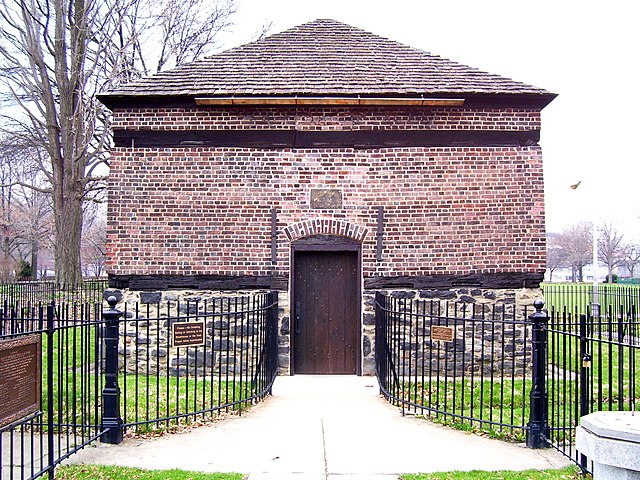The history of Pittsburgh began with centuries of Native American civilization in the modern Pittsburgh region, known as Jaödeogë’ in the Seneca language. Eventually, European explorers encountered the strategic confluence where the Allegheny and Monongahela Rivers meet to form the Ohio, which leads to the Mississippi River. The area became a battleground when France and Great Britain fought for control in the 1750s. When the British were victorious, the French ceded control of territories east of the Mississippi.
Pittsburgh in 1902. Lithograph by Thaddeus Mortimer Fowler.
The Fort Pitt Blockhouse, dating to 1764, is the oldest structure in Pittsburgh.
Fort Pitt, 1795
Second Court House, completed 1841
The riverside village of Logstown also known as Logg's Town, French: Chiningue near modern-day Baden, Pennsylvania, was a significant Native American settlement in Western Pennsylvania and the site of the 1752 signing of the Treaty of Logstown between the Ohio Company, the Colony of Virginia, and the Six Nations, which occupied the region. Being an unusually large settlement, and because of its strategic location in the Ohio Country, an area contested by France and England, Logstown was an important community for all parties living along the Ohio and tributary rivers. Logstown was a prominent trade and council site for the contending British and French colonial governments, both of which made abortive plans to construct forts near the town. Logstown was burned in 1754 and although it was rebuilt, in the years following the French and Indian War it became depopulated and was eventually abandoned.
The stone marker at or near the former site of Logstown (1725-1758)
Unnamed Iroquois chief, early 18th century.
Conference between French and Native American leaders around 1750 by Émile Louis Vernier.
"Washington in the Indian Council," by Junius Brutus Stearns (1847), depicting Washington (standing) and Gist meeting with Shingas, Scarouady, Tanacharison, and other Native American leaders at Logstown in November, 1753.








